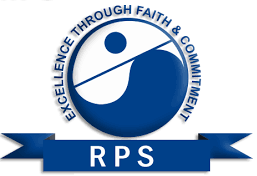
| University | Chandigarh University |
| Exam | Chandigarh University Admission [CUCET] |
| Download | Sample Question Papers |
| Document Type | Online |
| Official Website | https://cucet.cuchd.in/index.aspx |
Chandigarh University Admission [CUCET] Sample Papers
Wondering what a CUCET Examination seems like? The discipline-wise sample papers below will guide you with the knowledge of what to expect.
Download All Scholarship Test Question Papers Here
Download Chandigarh University Admission [CUCET] Sample Papers
- Accountancy
- Chemistry
- Economics
- Political Science
- English
- Biology
- General Studies
- Sociology
- History
- Mathematics
- Physics
- Commerce
- Hindi
- General Knowledge
- Logical Reasoning
- Quantitative Analysis
- Basic Computer Knowledge
- Computer
- Chemistry (Lateral Entry)
- Physics (Lateral Entry)
- English (Lateral Entry)
- Mathematics (Lateral Entry)
- ME-CSE
- ME-ECE
- ME-EE
- ME-Civil
- ME-AutoMobile
- ME-Mechanical
- Legal Studies
- Public Administration
- Philosophy
- Geography
- Mass- Media
- Psychology
Chandigarh University Admission [CUCET] Sample Questions
Subject: Accountancy
1.Financial statements are prepared:
• Only for publicly owned business organizations.
• For corporations, but not for sole proprietorships or partnerships.
• Primarily for the benefit of persons outside of the business organization.
• In either monetary or nonmonetary terms, depending upon the need of the decision maker.
2.The basic purpose of an accounting system is to:
• Develop financial statements in conformity with generally accepted accounting principles.
• Provide as much useful information to decision makers as possible, regardless of cost.
• Record changes in the financial position of an organization by applying the concepts of double-entry accounting.
• Meet an organization’s need for accounting information as efficiently as possible.
3.Information is cost effective when:
• The information aids management in controlling costs.
• The information is based upon historical costs, rather than upon estimated market values.
• The value of the information exceeds the cost of producing it.
• The information is generated by a computer-based accounting system.
4. Although accounting information is used by a wide variety of external parties, financial reporting is primarily directed toward the information needs of:
• Investors and creditors.
• Government agencies such as the Internal Revenue Service.
• Customers.
• Trade associations and labor unions.
5.All of the following are characteristics of managerial accounting, except:
• Reports are used primarily by insiders rather than by persons outside of the business entity.
• Its purpose is to assist managers in planning and controlling business operations.
• Information must be developed in conformity with generally accepted accounting principles or with income tax regulations.
• Information may be tailored to assist in specific managerial decisions.
6.A complete set of financial statements for Hartman Company, at December 31, 1999, would include each of the following, except:
• Balance sheet as of December 31, 1999.
• Income statement for the year ended December 31, 1999.
• Statement of projected cash flows for 2000.
• Notes containing additional information that is useful in interpreting the financial statements.
7.In comparison with a financial statement prepared in conformity with generally accepted accounting principles, a managerial accounting report is more likely to:
• Be used by decision makers outside of the business organization.
• Focus upon the operation results of the most recently completed accounting period.
• View the entire organization as the reporting entity.
• Be tailored to the specific needs of an individual decision maker.
8. The nature of an asset is best described as:
• Something with physical form that is valued at cost in the accounting records.
• An economic resource owned by a business and expected to benefit future operations.
• An economic resource representing cash or the right to receive cash in the near future.
• Something owned by a business that has a ready market value.
9. The balance sheet item that represents the resources invested by the owner is:
• Accounts receivable.
• Cash.
• Note payable.
• Owner’s equity.
10. Arguments that the cost principle is not a satisfactory basis for the valuation of assets in financial statements are usually based on:
• The lack of objective evidence to permit verification of cost data.
• Increased availability and capacity of computers.
• Stronger internal control structures.
• Continued inflation.
Have a question? Please feel free to reach out by leaving a comment below


![Madras University BA/B.Com English II [CLZ2B] Question Papers UNOM-Logo](https://www.recruitmentzones.in/wp-content/uploads/2022/01/UNOM-Logo-150x150.jpg)
![Vidyapeeth Scholarship Cum Admission Test [VSAT] Sample Paper Vidyapeeth-Academy-Logo](https://www.recruitmentzones.in/wp-content/uploads/2022/06/Vidyapeeth-Academy-Logo-150x150.jpg)
